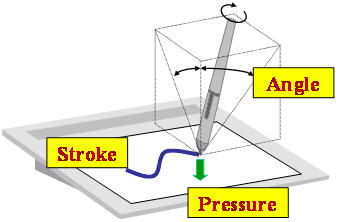

ACKNOWLEDGEMENTS This study has been partially supported by Grant-in-Aid for Scientific Research (No.14780338 in the year 2002-2004, and No.20500118 in the year 2008-2010), Microsoft Research Asia Mobile Computing in Education Theme, and Exploratory Software Project of IPA (Information-technology promotion agency in Japan). We are grateful for the work and support of all the members of the Ren Lab in Kochi University of Technology. We also thank the anonymous reviewers for their valuable comments of early versions of our publications. Their contributions are gratefully acknowledged. |
|---|
 |
Pen-based interaction is an attractive user-computer interface paradigm. With the advances in hardware technology, off-the-desktop computing in the forms of handheld devices and tablets has made pen-based interfaces increasingly more relevant to mainstream applications. Pen-based interfaces are designed on the Pen-Paper metaphor which is analogous to the user's real working environment, it is natural for people, especially fit for the handwritings. Pen-Paper metaphor is a universal and fundamental way for capturing daily experience, communicating ideas, recording important events, conducting deep thinking and visual descriptions. Pen-based devices (e.g., PDAs and Tablet PCs) are featured with digital pens and touch screens. Digital pens inherit properties of real pens and are endowed digital with digital characteristics (e.g., pressure and orientation input modalities), which significant extends functions of digital pens. Our researches include the fundamental studies on multiple input modalities of pen and the revelent interaction techniques. We also develop applications that reflect the characteristics of pens by incorparating many pen-based techniques. |
|
 |
Last updated: May 16, 2007 Address:185 Miyanokuchi Tosayamada-cho Kami-shi, Kochi Japan 782-8502 TEL/FAX : +81-887-57-2209(Direct) |
|---|